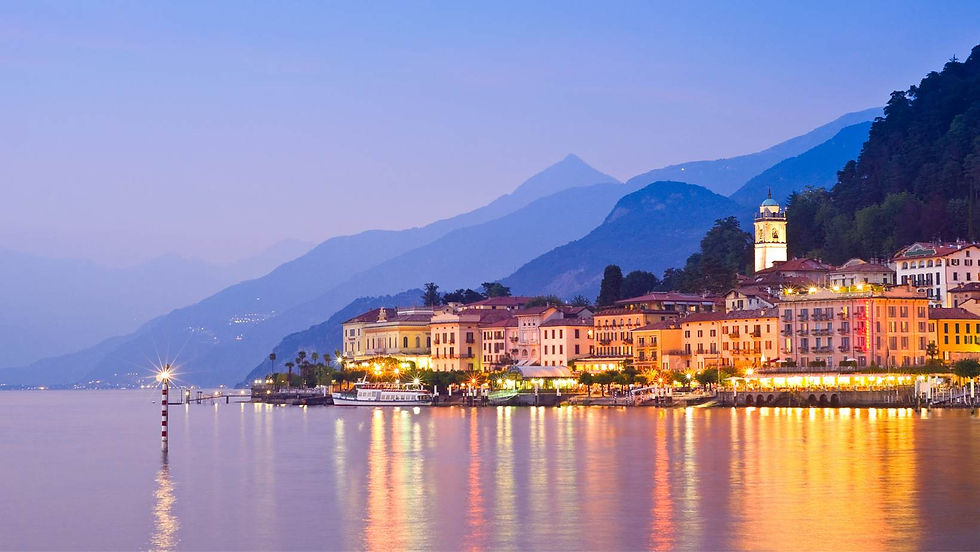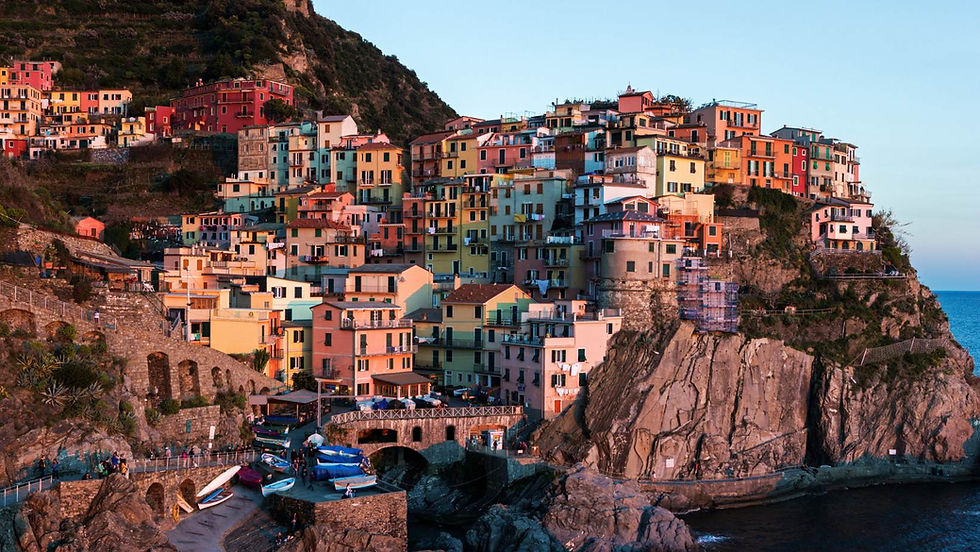Ten (10) Must-Visit Destinations in Italy
- Kahera Luxury
- Aug 14, 2023
- 6 min read

Italy has a diverse geography that includes the Alps in the north, the Apennine Mountains running down the center, and a long coastline with beautiful beaches and iconic coastal regions. It is a country located in southern Europe, bordered by France, Switzerland, Austria, and Slovenia to the north. It's surrounded by the Mediterranean Sea to the west, south, and east.
After the fall of the Roman Empire, Italy saw the rise of various city-states and regional powers during the Middle Ages. It wasn't until the 19th century that Italy became a unified nation-state. Italy is known for its profound influence on art, culture, and philosophy, and its cuisines are celebrated globally and are characterized by its emphasis on fresh ingredients and simple preparation methods. That being said, here are ten must-visit destinations in Italy!
Rome:

Rome was originally built on seven hills: Aventine, Caelian, Capitoline, Esquiline, Palatine, Quirinal, and Viminal. The Colosseum, one of Rome's most iconic landmarks, was used for gladiatorial contests and public spectacles. It could hold an estimated 50,000 to 80,000 spectators. Vatican City, a sovereign city-state, is entirely surrounded by the city of Rome. It's the smallest independent state in the world both in area and population. The dome of St. Peter's Basilica in Vatican City was designed by Michelangelo and is a remarkable architectural achievement. Its height and dimensions have inspired many other domes around the world. Rome is home to over 2,000 fountains, the most famous being the Trevi Fountain. Legend says that if you throw a coin over your left shoulder into the fountain, you'll ensure a return to Rome.
Venice:

Venice is built on a network of 118 islands connected by canals and over 400 bridges. Its unique architecture and transportation system make it one of the most famous water-based cities in the world. Unlike most cities, Venice has no roads for cars. Instead, the primary modes of transportation are boats, gondolas, and walking. Gondolas are iconic symbols of Venice. Traditionally, there were around 10,000 gondolas in the city, but today there are far fewer. Gondoliers, the people who steer these boats, undergo special training and certification. Venice is famous for its elaborate and artistic masks, especially during the annual Carnival of Venice. Historically, masks allowed people to hide their identity and social status while mingling with others. Venice experiences a phenomenon called "acqua alta," or high water, when the tide rises and floods some parts of the city. Wooden walkways called "catwalks" are set up to navigate these flooded areas.
Amalfi Coast:

The Amalfi Coast is famous for its breathtaking coastal road, known as the Amalfi Drive. It winds along the cliffs, offering incredible views of the Mediterranean Sea and charming villages. In 1997, the Amalfi Coast was designated as a UNESCO World Heritage Site for its exceptional natural beauty and cultural significance. Limoncello, a popular Italian lemon liqueur, is a specialty of the Amalfi Coast. It's made from locally grown lemons and is often enjoyed as a refreshing after-dinner drink. The Amalfi Coast was historically part of the Maritime Republic of Amalfi, which played a significant role in Mediterranean trade and naval history. Two neighboring towns, Maiori and Minori, are known for their long sandy beaches and historical sites. Maiori has one of the largest beaches on the coast. The Amalfi Coast's stunning beauty has inspired numerous artists, writers, and filmmakers. Its picturesque scenery has been featured in various movies and novels.
Lake Como:

Lake Como is renowned for its stunning natural beauty, surrounded by the foothills of the Alps and dotted with charming towns and villages. Lake Como is the third largest lake in Italy, with a length of about 46 kilometers (28 miles) and a maximum depth of approximately 410 meters (1,345 feet). The lake has long been a playground for the wealthy and famous. Its shores are lined with opulent villas, and the lake often features luxurious yachts. The town of Bellagio, often referred to as the "Pearl of the Lake," is situated at the point where the lake's three branches meet. Its charming streets, shops, and panoramic views attract visitors. The color of Lake Como's waters can vary from deep blue to emerald green, depending on the weather, time of day, and the surrounding landscape. The actor George Clooney owns a villa on Lake Como, and the area has become associated with celebrity getaways. Lake Como's beauty, history, and connection to both nature and culture make it a captivating destination for travelers seeking relaxation, history, and a touch of glamour.
Naples:

Naples is one of the oldest continuously inhabited cities in the world, with a history dating back to ancient Greek and Roman times. Naples is famously known as the birthplace of pizza. The Margherita pizza was supposedly created here in honor of Queen Margherita of Savoy. Naples lies in close proximity to the infamous Mount Vesuvius, a volcano that famously destroyed the Roman cities of Pompeii and Herculaneum in AD 79. Naples' historic center, a UNESCO World Heritage site, is one of the largest and best-preserved in Europe, featuring narrow streets, churches, and historic buildings. The bustling streets of Naples are famous for their lively atmosphere, with vendors, musicians, and vibrant markets like the Spaccanapoli. Don’t forget to try out Naples’ rich street food culture. Besides pizza, you can find local favorites like sfogliatella (a pastry) and various types of fried snacks.
Tuscany:

Tuscany's cultural heritage, artistic achievements, and scenic beauty make it a captivating region for travelers seeking history, art, culinary delights, and the charm of the Italian countryside. Tuscany, and specifically Florence, is often considered the birthplace of the Renaissance, a period of great cultural and artistic achievement in Europe. Tuscany is known for producing some of Italy's finest wines, with Chianti being one of the most famous wine regions in the world. It is also home to an impressive array of art museums, galleries, and historic sites. The Uffizi Gallery in Florence houses a vast collection of renowned artworks. Tuscany's cuisine is known for its simplicity and emphasis on high-quality ingredients. Dishes like ribollita (a hearty soup) and bistecca alla fiorentina (Florentine steak) are popular. Tuscany is home to several natural thermal springs and spa towns, such as Montecatini Terme and Saturnia, where visitors can relax and unwind.
Milan:

Milan is Italy's financial and economic hub. It's home to the Italian Stock Exchange (Borsa Italiana) and many international businesses. It is widely regarded as one of the world's fashion capitals, hosting famous fashion events like Milan Fashion Week and being home to numerous luxury brands and boutiques. Leonardo da Vinci's masterpiece, "The Last Supper," is located in Milan's Convent of Santa Maria delle Grazie. It's one of the most iconic and studied paintings in history. Milan's cathedral, the Duomo, is one of the largest and most intricate Gothic cathedrals in the world. Its intricate façade and impressive interior make it a must-visit landmark. Milanese cuisine includes iconic dishes such as risotto alla Milanese (saffron risotto), ossobuco (braised veal shanks), and panettone (a traditional Christmas bread). Milan's blend of history, culture, fashion, and modernity make it a unique destination that caters to a wide range of interests.
Sardinia:

Sardinia's rich history, distinct culture, and beautiful landscapes make it a fascinating and unique destination within the Mediterranean. Sardinia is the second-largest island in the Mediterranean Sea. The island is dotted with thousands of ancient stone structures known as nuraghi. These Bronze Age towers served various purposes, including defensive and religious functions. Sardinia has its own distinct language called Sardinian (Sardu), which has several dialects. It's one of the few Romance languages with its origins in Latin. Sardinia hosts various traditional festivals throughout the year, such as the "Sartiglia" in Oristano, where horse riders participate in acrobatic stunts.
Pisa:

Pisa's leaning tower and historical significance, along with its scientific contributions and architectural heritage, make it an intriguing destination for travelers interested in history, culture, and unique landmarks. The Leaning Tower of Pisa is one of the most recognizable landmarks in the world, originally designed as a free-standing bell tower for the cathedral, its distinctive tilt, caused by unstable foundation soil, has made it a famous tourist attraction. Did you know that the renowned scientist Galileo Galilei was born in Pisa in 1564? He made groundbreaking contributions to astronomy and physics. The University of Pisa, founded in 1343, is one of Italy's oldest universities. It has a rich history of academic excellence and has produced notable alumni. The Camposanto Monumentale, a monumental cemetery in Pisa, contains a series of valuable frescoes depicting scenes from the Bible and other religious themes.
Cinque Terra:

Cinque Terre has become a popular tourist destination, attracting visitors from around the world who come to experience its beauty, charm, and tranquil ambiance. "Cinque Terre" translates to "Five Lands." It refers to the five picturesque villages that make up this UNESCO World Heritage Site: Monterosso al Mare, Vernazza, Corniglia, Manarola, and Riomaggiore. The villages of Cinque Terre are known for their colorful houses that line the cliffs along the Ligurian Sea. The vibrant hues create a striking contrast against the blue waters. Cars are not allowed in most parts of Cinque Terre. The villages are best explored on foot, by train, or by boat, contributing to their charming, pedestrian-friendly atmosphere. The steep hillsides of Cinque Terre are famous for their terraced vineyards, where grapes are cultivated to produce the region's signature wine, Sciacchetrà. Cinque Terre's stunning landscapes, colorful villages, and unique charm make it a special place for travelers.



Comments